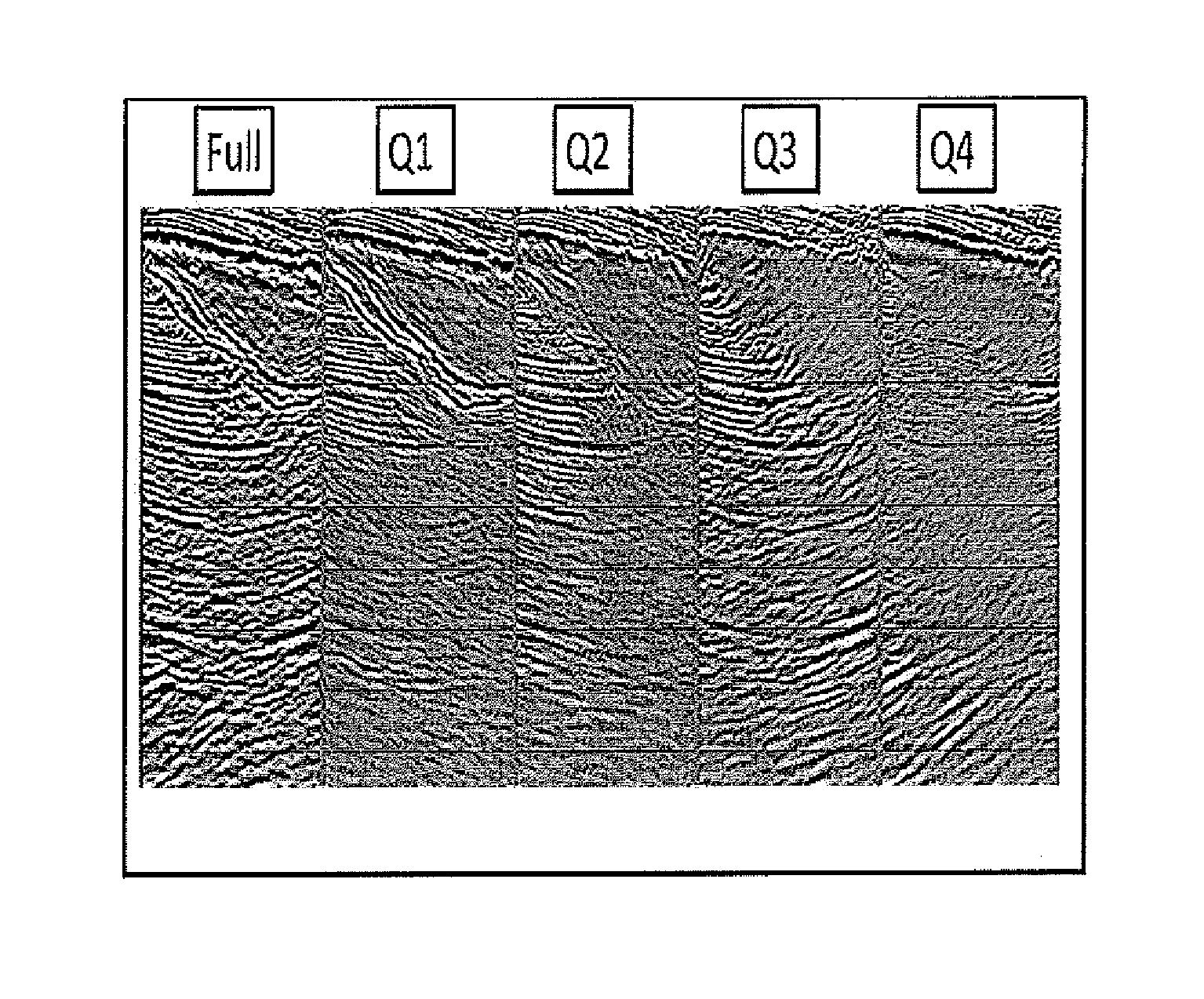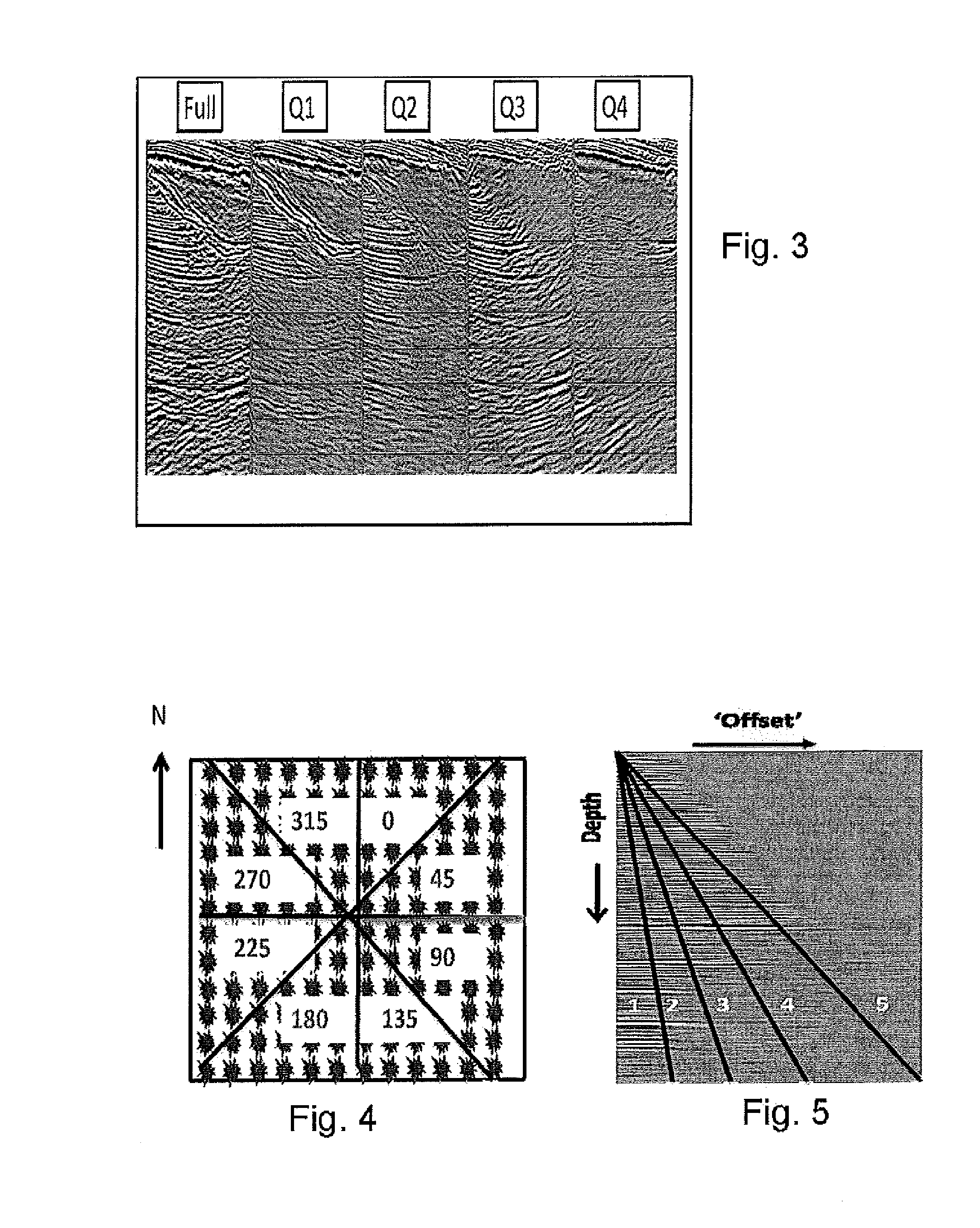SIGNAL ENHANCEMENT USING DIVERSITY SHOT STACKING FOR REVERSE TIME MIGRATIONS (DeSSeRT)
a reverse time migration and signal technology, applied in image enhancement, instruments, image data processing, etc., can solve the problems of muting more difficult than with conventional image gathers, generating appropriate image gathers for this process is a more expensive proposition, and reducing so as to improve the overall s/n ratio of the final stack. , the effect of simple and inexpensiv
- Summary
- Abstract
- Description
- Claims
- Application Information
AI Technical Summary
Benefits of technology
Problems solved by technology
Method used
Image
Examples
Embodiment Construction
[0022]In order to provide a data-dependent mute function, we start with SIG substacks. It can be observed that substacks of shot-image gathers produce an image showing which parts of the subsurface are illuminated by different grouping of shots. One example is to split the SIG into quadrants depending on the vector SIG distance (i.e., NE., SE., NW., SW.) as shown in FIG. 3.
[0023]The quadrant stacks show how different parts of the image are imaged by different subsets of migrated shots. It is desirable to design a way to weight the different substacks so as to achieve an optimal image. One example of such an approach is to use illumination weights for stacking on post-migration Vector Offset Tile data, as shown by Xu et al., 2011.
[0024]The present invention is based on the observation that the noise on any particular SIG can be parsimonious but of very high amplitude. Hence, an amplitude-based weighting of an entire quadrant may not properly reject the noise. This is also the case fo...
PUM
 Login to View More
Login to View More Abstract
Description
Claims
Application Information
 Login to View More
Login to View More - R&D
- Intellectual Property
- Life Sciences
- Materials
- Tech Scout
- Unparalleled Data Quality
- Higher Quality Content
- 60% Fewer Hallucinations
Browse by: Latest US Patents, China's latest patents, Technical Efficacy Thesaurus, Application Domain, Technology Topic, Popular Technical Reports.
© 2025 PatSnap. All rights reserved.Legal|Privacy policy|Modern Slavery Act Transparency Statement|Sitemap|About US| Contact US: help@patsnap.com



